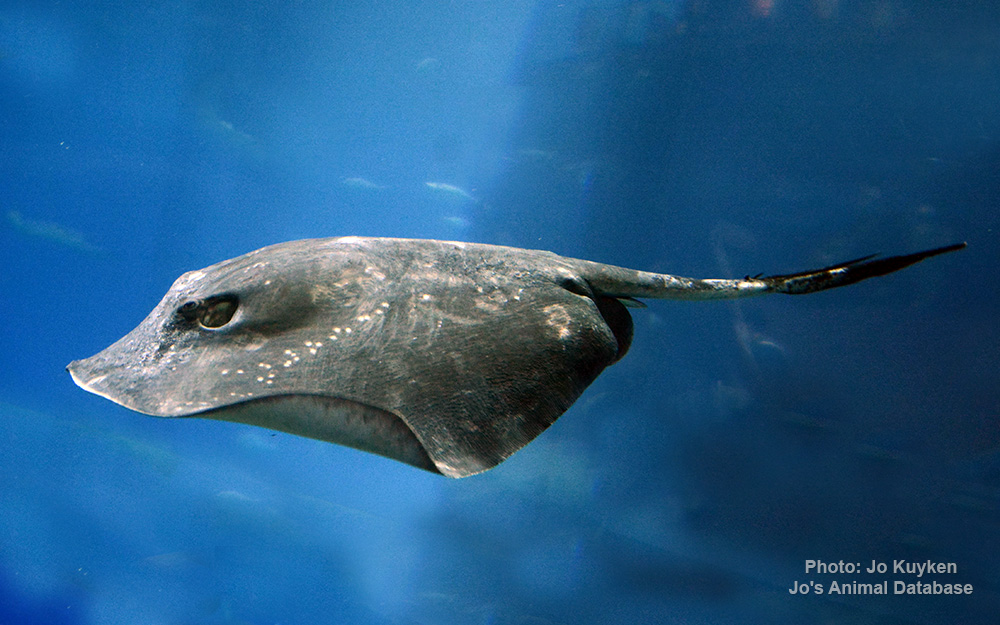Short-tail stingray
(Bathytoshia brevicaudata)

Image source: Jo's Animal Database
Classification
General data
The short-tail stingray or smooth stingray (Bathytoshia brevicaudata) is a common species of stingray in the family Dasyatidae.
It occurs off southern Africa, typically offshore at a depth of 180–480 m (590–1,570 ft), and off southern Australia and New Zealand, from the intertidal zone to a depth of 156 m (512 ft).
It is mostly bottom-dwelling in nature and can be found across a range of habitats from estuaries to reefs, but also frequently will swim into open water.
One of the largest stingrays in the world, this heavy-bodied species can grow upwards of 2.1 m (6.9 ft) across and 350 kg (770 lb) in weight.
Its plain-colored, diamond-shaped pectoral fin disc is characterized by a lack of dermal denticles even in adults, and white pores beside the head on either side. The body can have colors as well as dark grey or black with rows of white spots along each wing.
Its tail is usually shorter than the disc and thick at the base.
It is armed with large tubercles and a midline row of large thorns in front of the stinging spine which has the dorsal and ventral fin folds behind.
The short-tail stingray is common and widely distributed in the temperate waters of the Southern Hemisphere. Off southern Africa, it has been reported from Cape Town in South Africa to the mouth of the Zambezi River in Mozambique. Along the southern Australian coast, it is found from Shark Bay in Western Australia to Maroochydore in Queensland, including Tasmania. In New Zealand waters, it occurs off North Island and the Chatham Islands, and rarely off South Island and the Kermadec Islands. Records from northern Australia and Thailand likely represent misidentifications of pink whipray and pitted stingray, respectively. Over the past few decades, its range and numbers off southeastern Tasmania have grown, possibly as a result of climate change.











